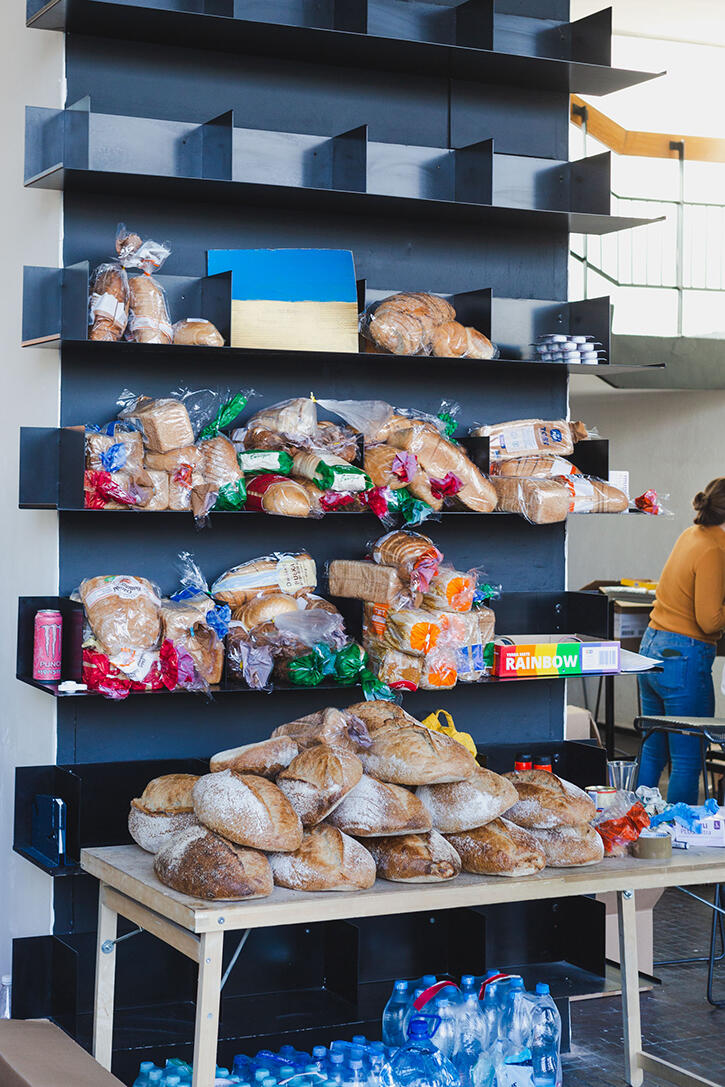A Ukrainian Poet Tackles Homelessness in Poland
Taras Gembik draws attention to the plight of migrants in Warsaw
Taras Gembik draws attention to the plight of migrants in Warsaw

‘Please don't call what I'm doing art,’ says Taras Gembik when we meet on a sunny September afternoon in Warsaw. A coordinator at the city’s Museum of Modern Art, and an activist within Poland’s large Ukrainian diaspora and its queer community, Gembik has assumed many identities in the city he now calls home: poet, animator, actor and performer. His reluctance to define his activities as art stems not only from his lack of formal studies in the field, but also the fact that, unlike many working in the museum sector, a career in the arts had not been a part of his plan. Originally from the small Ukrainian town of Volhynia, Gembik came to Poland to study medicine. When his parents’ financial situation deteriorated after the 2014 Russian invasion, he had to quit school and choose between returning home or trying his luck in the Polish capital. Gembik took the train to Warsaw.

Initially homeless and without a steady job, Gembik – a handsome, attenuated young man with kind blue eyes – got on his feet with the help of his friends and soon found work at the Museum of Modern Art after approaching the institution, via Instagram, to ask why their programme had nothing to offer Ukrainians living in the city. In addition to leading museum tours, Gembik also became involved in an associated programme integrating migrants arriving in Poland. While working at the museum, he met the curator Maria Beburia, with whom he co-founded the group Blyzkist (Ukrainian for ‘physical, emotional and spiritual closeness’). More a support network than an artists’ collective, the group focuses on helping others who are homeless or at risk of homelessness.
When Blyzkist launched in spring 2020, its first gesture was a simple one: the preparation and distribution of 70 sandwiches and 70 accompanying brochures containing basic information for people from Belarus and Ukraine. ‘This kind of “starter pack” for migrants can help them feel that they are not alone,’ says Gembik. ‘I know how important it is because I was in the same situation myself.’
Together with his friends – curators, coordinators and artists – Gembik squatted at the museum, which was closed during Poland’s COVID-19 lockdown, turning it into a self-help community centre called Słonecznik (Sunflower). Before the war and the pandemic, an estimated 1.5 million Ukrainians lived and worked in Poland; by autumn 2022, that number exceeded five million – 13% of the country’s total population.

Yet, despite their increasing presence, Ukrainians remained invisible to most Poles and Polish cultural institutions. This was something Gembik decided to set about changing: with his help, the Museum of Modern Art was transformed into a meeting place for migrants. ‘My art is not making art, it is creating a rupture within an institution,’ Gembik tells me on a warm September afternoon, adding that he is most interested in building relationships with other people. Initially prompted to address the invisibility of the homelessness crisis, he then became engaged in a series of public debates with friends and fellow activists about the indifference of cultural institutions to people with experience of migration. During this time, Gembik was developing his performance and poetry practice, in which he appropriates works by such authors as Lina Kostenko, Vasyl Symonenko, Vasyl Stus and Lesya Ukrainka. ‘For me, language is a form of resistance,’ he says. ‘I am interested in repressed poetry and in the use of the Ukrainian language, for which Russians exiled people to Siberia and shot them during the 19th and 20th centuries. Something they still do today.
In an untitled poem from 2020, Gembik asks: ‘What is the essence of the other in another?’ After Belarus’s widely discredited 2020 elections, and the subsequent wave of repression and migration, Blyzkist opened its doors to the experience of Belarusians and the Belarusian language, which writer and activist Olga Mzhelskaya also performatively uses. When Russia launched a full-scale invasion of Ukraine in February 2022, the collective was ready to act. Instead of making 70 sandwiches, the group prepared 3,000 meals a day, as well as providing humanitarian aid and medicines to Ukraine and those fleeing the war, in collaboration with Fundacja Bądź. Cooking sessions, workshops for children, lectures and performances were all part of the spontaneous, grassroots programme provided by Blyzkist and Słonecznik.

‘I asked myself: what is art and what can I do when war breaks out?’ Gembik tells me. ‘Not everyone can fight, but everyone can get involved and do something. I do not mean empty gestures or naive texts, like the one Paul B. Preciado wrote [in Libération in May 2022] that proposes a war can end with a peace march,’ he adds.
At the end of our conversation, Gembik, discomfited by the thought of taking sole credit for representing the organizations of which he’s part, asks me to list the names of his collaborators at Słonecznik. In addition to Beburia, they include Sebastian Cichocki, Jakub Depczyński, Yulia Krivich, Kaja Kusztra, Natalia Sielewicz and Bogna Tęczynopol. ‘It’s incredibly important to me that they are named,’ he says, ‘because the success of this project all comes down to their time and hard work.
This article first appeared in frieze issue 232 as part of a dossier with the headline ‘Forms of Resistance’
Main image: Self-help community centre Słonecznik, 2022. Courtesy: Taras Gembik; photograph: Yulia Krivich























